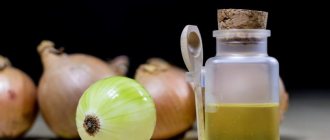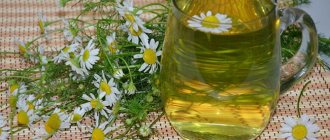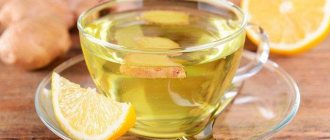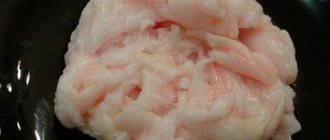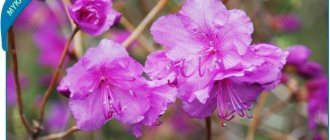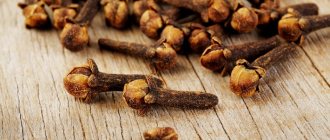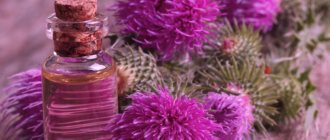Rainy seasons, winter frosts and off-seasons always affect the human body. They manifest themselves in the form of colds, which are accompanied by high body temperature or without it.
But coughing, runny nose, and sneezing are regular occurrences. Treatment is necessary without delay, since worsening cold symptoms reduces the body's protective functions.
It is difficult to choose a pharmacological medicine, but folk therapy in the form of medicinal herbs will always come to the rescue. Sage for coughs has been used for a long time, is trustworthy, and its medicinal properties have been proven by scientists.
Dosage forms based on this herb have unique properties and capabilities that help get rid of not only coughs.
Healing properties
The plant contains many useful micro- and macroelements, vitamins and minerals. K, A and P are present here, as well as acids: acetic and formic. A large number of essential oils. Due to a successful, unique combination, therapy takes place in all areas:
- fight against viruses and infections;
- relieving the inflammatory process in the respiratory system;
- strengthening the immune system;
- liquefaction, removal of sputum;
- reduction of blood sugar, normalization of emotional state.
The result is quick and the effect is long lasting. All this is possible thanks to the following components:
| Component | Properties |
| Camphor | Preserved in dry grass. Fresh herbs are more effective. Helps to raise the emotional state, has an expectorant effect. Used to treat female diseases |
| Salvin | Has antibacterial capabilities |
| Chlorogenic acid | Excellent antiviral substance |
| Ursolic acid | Provides a reduction in the inflammatory process and has an antimicrobial effect. Used to lower blood sugar |
| Cineole | Contains essential oil. Found in leaves, flowers, roots. Has an antiseptic, expectorant effect |
Interesting fact! Sage helps with inflammatory processes that occur throughout the body. Used as an anesthetic during menstruation, menopause, and restores ovulation. But at the same time, infusions and teas with sage stop the production of mother's milk by lowering prolactin.
The leaves of the plant are recommended for treatment, as they contain a high concentration of beneficial substances. Top shoots are also suitable. Medicinal qualities are not lost after drying.
Health Benefits of Sage
Sage is one of the medicinal herbs that have healing properties that have (the properties have) a beneficial effect on the body, due to which it is actively used in folk medicine. The following diseases are treated with this medicinal plant:
- they use sage for coughs of various natures: for sore throat, bronchitis, catarrhal symptoms of the upper respiratory tract;
- dental pathologies: gum inflammation, gingivitis, toothache;
- Sage is used externally as an anti-inflammatory and disinfectant.
Using sage for coughs
Sage for coughs is offered to children and adults in various medicinal preparations. These are lozenges, lollipops, syrups. It’s also easy to create dosage forms yourself at home.
In this case, there will be no significant material costs: infusions, teas, sweets, decoction. If you don’t have time to prepare the medicine, you can always buy sage in tablets or syrups:
- Bronchosip;
- Evalar;
- Dr. Theiss;
- lollipops and lozenges with sage.
The latter option is convenient because it is always at hand, fits in a purse, relieves inflammation, swelling of the throat, and has an antiseptic, anti-inflammatory, antimicrobial effect due to its astringent properties.
It is worth taking for laryngitis, tracheitis, bronchitis. The use of sage tablets and lozenges is not only an expectorant, but also an antispasmodic. Homemade recipes remain the best treatment.
Tea
For coughs in adults at the initial stage of the disease, it is better to brew sage in the form of tea. To do this, you just need to pour 1 tbsp of boiling water. l. herbs or make a 1 to 1 mixture: green tea and sage.
Mixtures for one time add 1 tsp per 150 ml of water. with a slide. Prepare tea every time before taking it. Leave for a quarter of an hour and strain. Drink up to 5 times a day.
Inhalations
The child will not always drink tea or decoction. Therefore, children over 3 years old can replace drinking with inhalation. It is best to use a nebulizer, but the old-fashioned method will also help. An infusion is made for the procedure.
The main thing is to create the medicinal liquid correctly:
- pour 2.5 tbsp. l. dry material half a liter of water;
- put on low heat and bring to a boil;
- remove from heat and let sit for a quarter of an hour.
How to brew sage for a child
Sage has long been used by people to treat many diseases, to calm nerves, heal wounds, and it also has a pleasant smell. Sage tea helps manage stress, improves sleep, promotes clear thinking and improves memory. That's why it is recommended for children.
We recommend reading: Berodual for dry cough: is it possible to do inhalation?
Instructions
- Children often get sick, the use of medications negatively affects the child’s entire body, can cause allergic reactions, impaired immunity, and appetite disorders. Sage is not only able to alleviate a child’s condition, this herbaceous plant will help with colds and inflammations; it has no side effects, as it is a natural remedy.
- Many modern children spend too much time in a sedentary state, play a lot on the computer, and do little sports. In addition, an unfavorable climate and long winters in the northern regions can also reduce stress resistance in children and cause a decrease in immunity. To avoid this, it is necessary to pay due attention to the baby's health. Children of preschool and primary school age, as a rule, are emotionally sensitive, which is why their mood can have such an impact on their health. If you notice that your child has become too thoughtful, inactive, and often catches colds, try brewing tea with sage for him for a week. This is done simply: put one teaspoon of dried sage in a mug, pour boiling water over it, cover and wait a few minutes. Afterwards, strain the drink and treat it to your baby. You can also add sugar, honey or a slice of lemon for taste. But do not overdo it with the amount of tea, the daily dose should not exceed 400 ml, and do not try to brew a strong drink. The optimal color of tea is unsaturated brown.
- Sage is used for inflammatory diseases in the oral cavity. The infusion is prepared by analogy with tea, only slightly thicker: brew 2 teaspoons of dry sage in 200 ml of hot, but not boiling water, cover, let it brew, cool to room temperature and offer it to the patient for rinsing. The taste of the liquid is pleasant, with notes of spice. You need to rinse three times a day for 2 minutes (to measure the time, you don’t have to use a watch; just, while rinsing, mentally count to 120).
- If your child does become infected in kindergarten or school, sage will also come to your aid. If your baby suffers from a cough, give him an inhalation with the infusion, this will help him cope with phlegm and throat irritation. Usually the plant is used together with eucalyptus: brew 1 tablespoon of sage and one tablespoon of eucalyptus in a glass of hot water. Let it brew and cool, then take 2 ml with a measuring syringe, dilute it with 1 ml of saline solution (sodium chloride) and pour it into the nebulizer container. Inhalation time is 5 minutes. Frequency: 2 times a day after meals.
- For coughs, brew sage and calendula in equal proportions, but add milk and a spoonful of honey to it. This remedy should be taken warm at night so that the child feels better the next morning. Try not to overuse medications; if the disease is mild, try treating your son or daughter with herbs. Of course, with the consent of the pediatrician.
- Be careful if you notice your child is unwell. Children often get sick due to psychological problems caused by stress. Therefore, you should find out what exactly is bothering your baby and talk to him. Brew him sweet tea with sage to relieve nervous tension, and perhaps this way you will be able to avoid more serious consequences.
Recipes with sage
If a person begins to cough, then the disease cannot be allowed to worsen. A slight cough very quickly develops into a severe cough and becomes chronic. At first, tea helps.
But provided that you didn’t have time and the disease progresses, it is better to start the healing process by creating homemade candies and syrups. Making sweets is not as difficult as it seems at first glance. The recipe for burnt sugar is used as a basis. Instead of water, a strong infusion of sage is used.
With honey
It is recommended to use the mixture obtained when properly prepared only from the age of 10 without intolerance to the ingredients.
According to the instructions, preparation involves the use of natural ingredients: honey - 200 ml, purified water - 50 ml, dry crushed sage - 20 g, a little lemon juice.
All ingredients are mixed cold and placed on low heat. Bring to a boil, cover, remove from heat. After 15 minutes, strain. Store in glass containers.
Application is permitted after complete cooling. Shelf life from the moment of preparation is 3 months.
Sage with milk
Sage with cough milk is similar to the recipe for making tea. But achieving results is twice as fast. Rapid effectiveness is achieved by combining two unique substances: natural cow's milk and sage.
Use regularly, at least 3 times a day. It will relieve inflammation and reduce symptoms after a one-day dose, but the course lasts from 5 days. Brew strictly according to the instructions:
- It is best to use a Turk. If there is none, take enamel dishes.
- For 200 ml of milk you will need 1 tbsp. l. plants. Place on low heat.
- Stir regularly until boiling. After the milk foam has risen, remove from the stove.
- Cover with a lid and let steep for 10-15 minutes.
- Strain through a triple layer of gauze.
- Immediately add a piece of butter and honey to taste.
Inhalations for children and adults
Inhalations with sage for coughs are quite effective and gentle at the same time. It allows you to quickly alleviate the condition of a patient suffering from cough, promotes the release of sputum, softens the severity of the cough and brings the long-awaited recovery closer. Therapeutic substances are inhaled in a vapor state and act on a large area of the mucous membrane of the respiratory tract - from the throat, trachea to bronchi. Inhalation can be used to treat both adults and children after 3 years.
Sage infusion for inhalation is prepared in different ways, the most popular method is the following:
- Pour 2-3 tablespoons of dry herbs into 2 cups of boiling water.
- Leave to infuse in a thermos or you can use a water bath for infusion.
- After the decoction has infused, it must be heated to boiling temperature to form full steam.
- Pour into a bowl and inhale, covered with a towel for 15-20 minutes. For children, the time should be reduced to 10 minutes.
It is convenient for this procedure to use special devices - nebulizers, which make the process more comfortable and safe, especially for inhalation with sage when coughing in children.
During pregnancy and lactation
Since the plant contains substances that can reduce lactation, sage is strictly forbidden to be drunk or taken in any form by pregnant and nursing mothers.
Even in the first trimester, the use of infusions, inhalations and syrups with herbs can provoke a miscarriage, as it tones the uterus. In the last trimester of pregnancy - premature birth.
Some doctors are convinced that sage is contraindicated for pregnant women only orally. And inhalation procedures will be beneficial. The best option to maintain a pregnancy is not to take risks, but to choose a more convenient, effective treatment option. Cough is eliminated with the help of chamomile, animal fats and other folk recipes.
Benefits of sage for cough
The healing properties of sage are successfully used for coughs. And if you doubt whether sage helps with a cough, we will give an example of its chemical composition and tell you how the plant acts on inflammatory processes accompanied by respiratory destruction.
The composition of this useful plant includes:
- flavonoids;
- phytohormones;
- alkaloids;
- minerals;
- vitamins;
- essential oils.
Sage-based products have the following effects:
- stop the inflammatory process;
- relieve spasms;
- contribute to the death of viruses;
- remove mucus from the bronchi;
- eliminate coughing attacks.
Contraindications and side effects
Contraindications are not only pregnancy and lactation. Sage can cause an allergic reaction and skin rashes. It is also impossible to treat with herbs if:
- hypotension;
- kidney inflammation;
- poor thyroid function;
- debilitating cough.
Sage is not recommended for use by children under 5 years of age.
Use in cough treatment
Sage remedies for the throat and lungs can be used topically or internally. Medications and folk remedies that are taken orally require strict adherence to the instructions and prior consultation with your doctor.
The quantity and frequency of medications taken is selected depending on the patient’s age, medical history and the nature of the disease.
For adults
For coughs in adult patients, all types of sage-based remedies can be used. Only neurological pathologies associated with motor disorders, incl. dysphagia (impaired swallowing).
Taking sage is prohibited for the following indications:
- menstrual irregularities, pregnancy and lactation;
- hyperthyroidism and other thyroid diseases;
- endometriosis;
- malignant (oncological) and benign diseases (including mastopathy);
- epilepsy, history of seizures;
- hypertension, a tendency to sudden jumps in blood pressure;
- hypotension;
- cysts, incl. upper respiratory tract;
- hypersensitivity to sage and other drug ingredients;
- acute kidney disease;
- hyperthermia, nosebleeds, failure of the respiratory and cardiovascular systems.
We recommend that you read The influence of St. John's wort on the potency of men
In case of an overdose or individual sensitivity to sage, nausea, vomiting, heartburn, headache, general weakness and convulsions may develop.
For children
Giving sage to children for cough is not recommended. A decoction and infusion of the plant is allowed for use only from 12 years of age, and essential oil for inhalation, aromatherapy and external application - from 7 years of age. Gargles are recommended for patients aged 3-4 years, and sage with cough milk for children aged 6 years and older.
Medicinal lozenges, lozenges and lozenges are prescribed to patients over 3 years of age (in some cases their use is allowed only from 4-5 years of age). This is because young children often chew the medicine or swallow it whole. Violation of the technique for taking the drug reduces its effectiveness and increases the risk of blocking the airways.
Collection and preparation of sage
The easiest way to stock up on sage is to buy it at the pharmacy. But you can carry out the collection and preparation yourself. The plant grows literally everywhere, but it is allowed to collect it in ecologically clean areas.
Collection months are late June – July. Even in early August before Elijah’s Day, the herb has medicinal properties.
Cut, not tear or break. The incision is made two phalanges above the ground. Form small bunches (6-8 branches each), tie with threads and hang higher in a dry room.
Avoid exposure to direct sunlight. The best place is the attic. You can check the readiness for chopping by the fragility of the branches. Immediately crumble and place in fabric bags or glass containers with screw-on lids.



